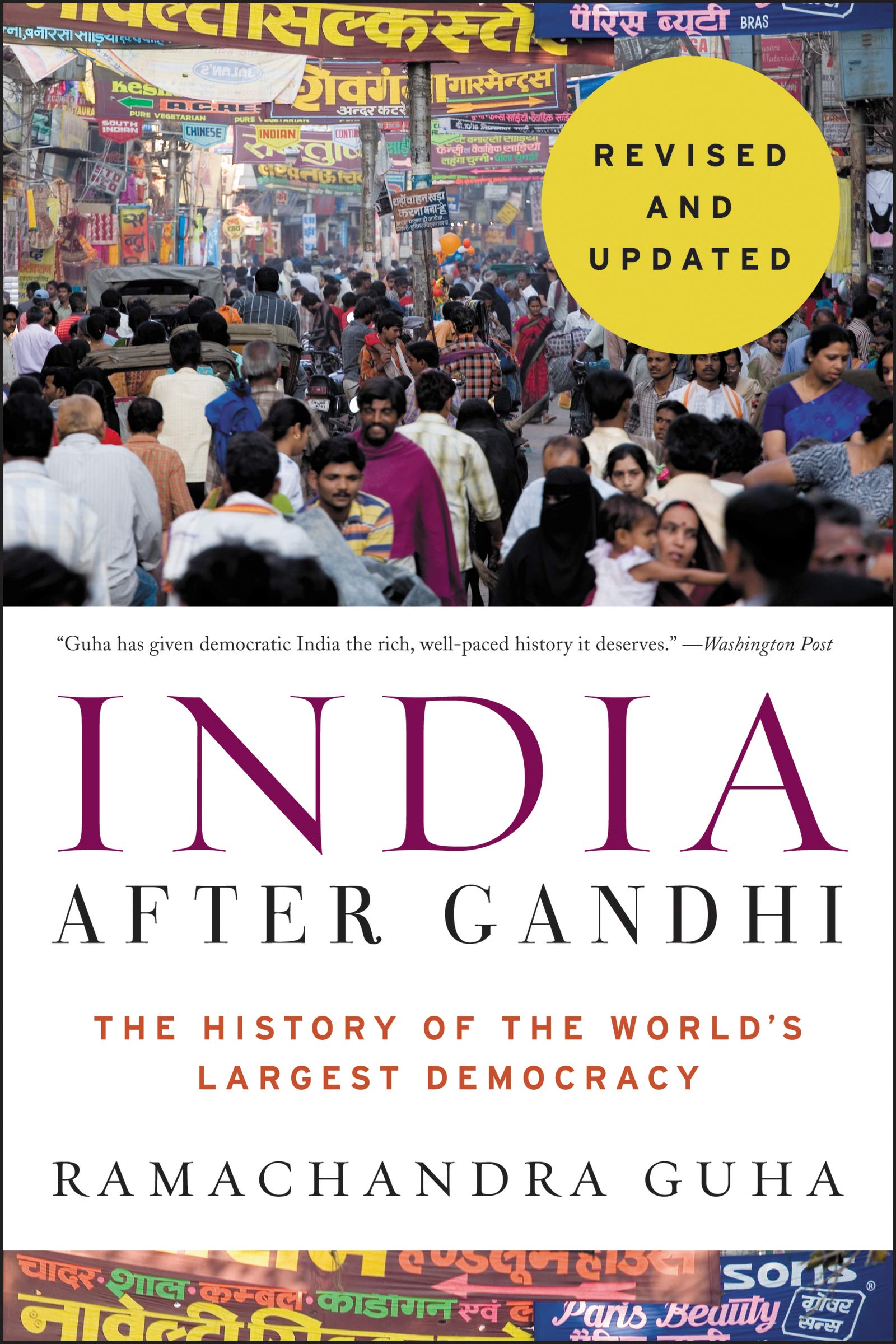Ramachandra Guha, India After Gandhi: The History of the World’s Largest Democracy (2017)
Since before it was founded, experts (one hesitates, in this context, to call them pundits) have been predicting that India is too diverse, too poor, too fractious to survive as a single nation. To gather up this endlessly complex state and its history into a single volume is a formidable task. To make it readable, at times gripping, with coherent themes and threads, is a triumph of scholarship and literary craft. (Salman Rushdie did it, more or less, in Midnight’s Children, but as a novel, with the freedom to ignore or change whatever didn’t fit the story.)
In fact India began as two nations, and it came as a bitter surprise to Muhammad Ali Jinnah, the founder of Pakistan, that Jawarhalal Nehru decided to use the colonial English name for his country, rather than calling it the Republic of Bharat or something else entirely. Except in fact India began as dozens of nations, if you count all the princely states, not to mention lingering European colonies, that were eventually absorbed into the Republic. (You’ll find that the word “subcontinent” is extremely rare until the 1920s, and takes off in the 1940s, when the politically amorphous region called India had suddenly to be distinguished from a potential, then actual nation-state called India.)
Guha starts before independence but focuses on the compelling story of how this mess of a country made its progress in the world. There is plenty of ugliness — Partition, military defeat from China, language riots, anti-Muslim riots, anti-Dalit riots, fights over Kashmir, massacres in the Punjab, famines, poverty, and lesser-known stories like those of the ongoing tribal conflict in Nagaland — but Guha, without underplaying the moral gravity of these issues, gives well deserved space to India’s many triumphs as well, from rising literacy to successful elections, from agricultural development to joining the global economy as an IT powerhouse.
Very large nations — India, China, the United States — tend to be inward-looking. There’s enough there to keep one occupied, and the neighbors are far off. (Whenever a European says Americans don’t know geography, I ask her to name any six American states and any two state capitals.) And there is always a danger, in any national history written by a native for a domestic audience, of becoming too parochial and assuming too much insider knowledge. Will a non-French reader know what the Second Empire is and means? Do people outside of America know about McCarthyism? Guha does an admirable job of avoiding this trap, which can be especially dangerous in India, a land of endless factions and acronyms (a scroll through today’s Hindustan Times gives us UP, DDMA, BJP, and BCCI).
Guha is unapologetically a secularist, a democrat, and a liberal. Since I am too, I found this perspective companionable enough. I share his distaste for the reactionary, antidemocratic forces in Indian history: the religious nationalism of Pakistan, the dynasticism of the Nehrus, Indira Gandhi’s quasi-fascism, and especially the contemporary rise of Hindutva, which threatens to destroy Indian pluralism and wipe away Muslim Indian culture older than the Magna Carta because it’s not Indian.
If you’re looking for a thorough, deeply researched, readable history of modern India, India After Gandhi is a fine choice.

